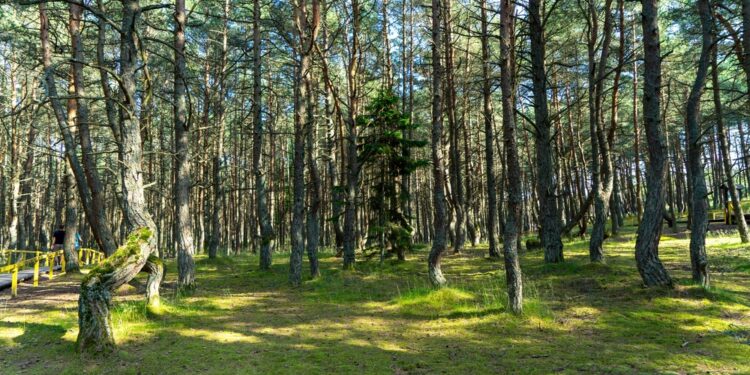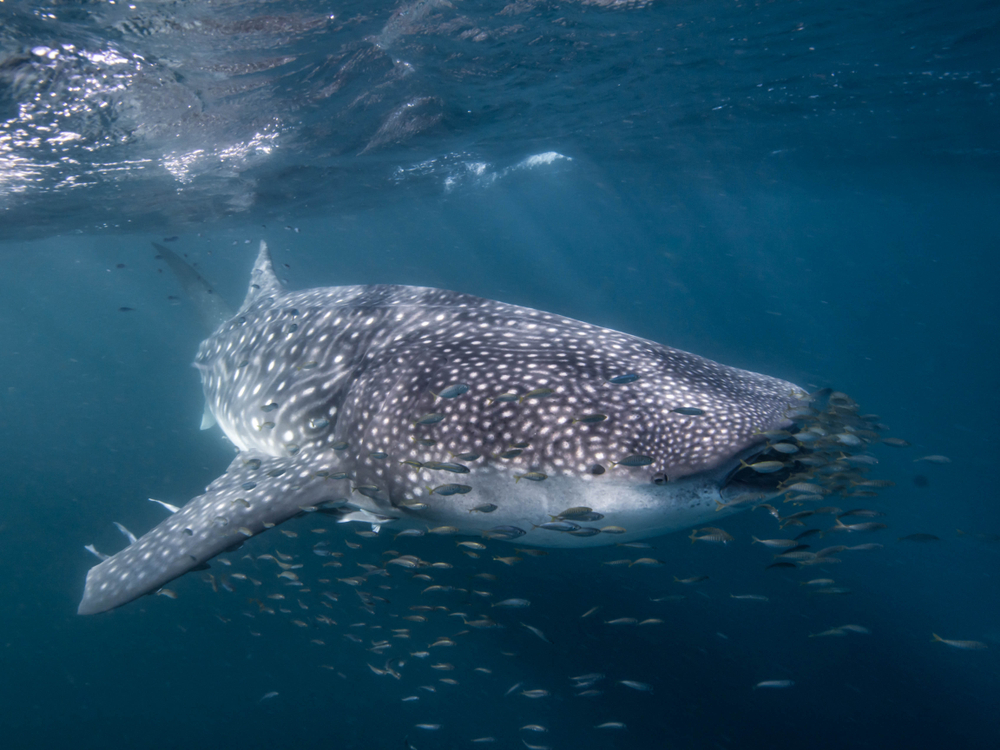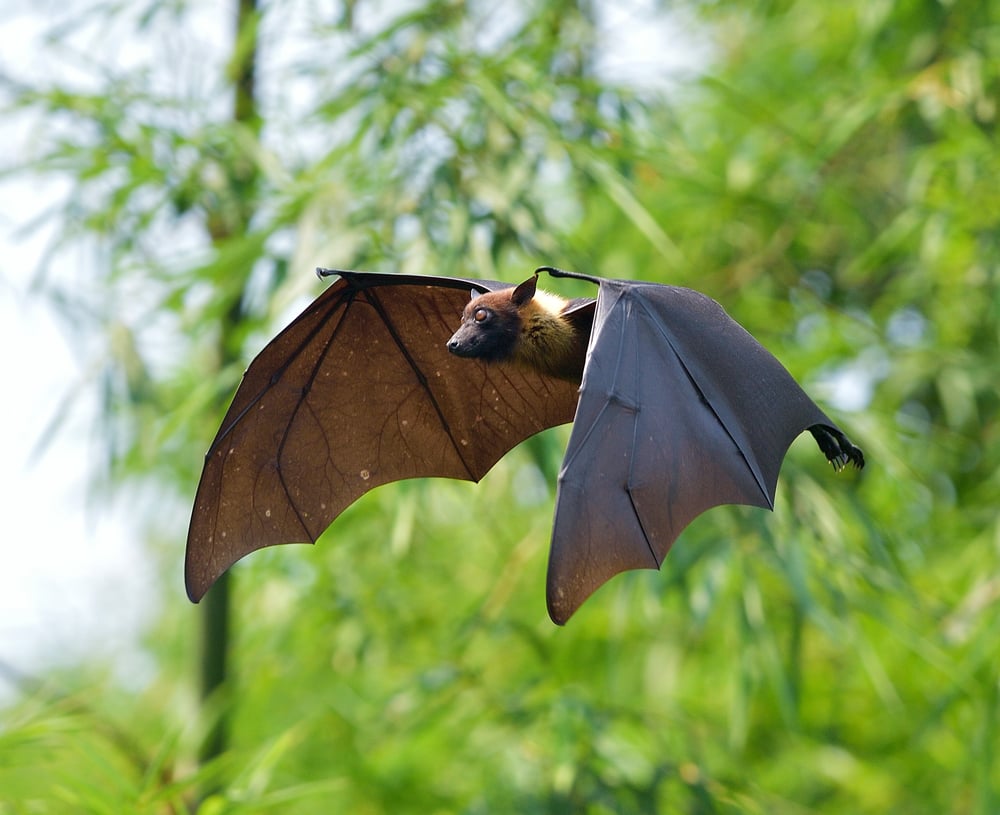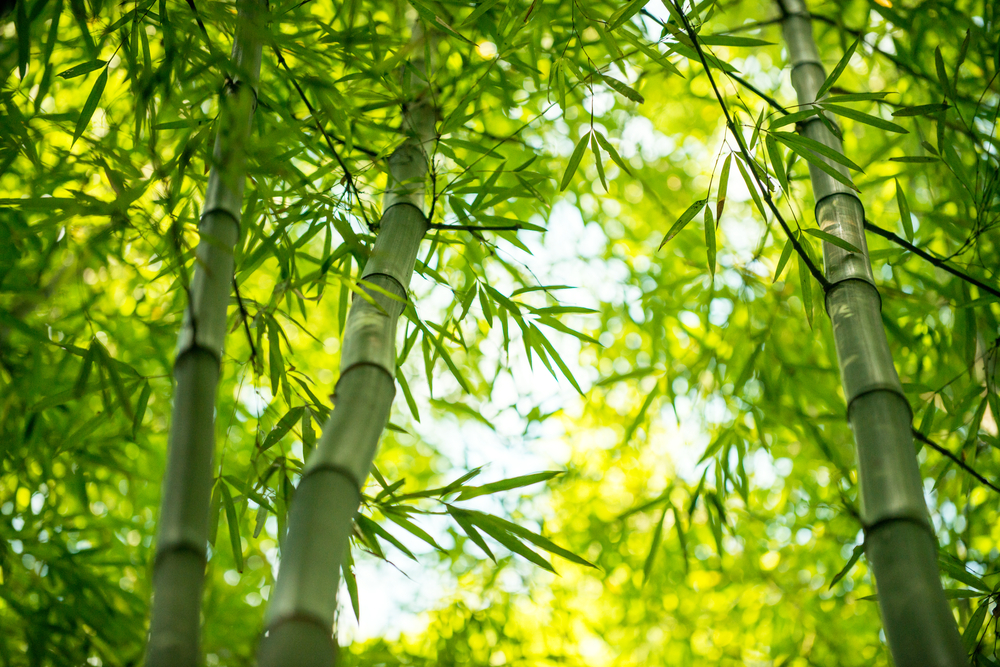Nestled between the waters of the Baltic Sea and the Curonian Lagoon lies an extraordinary natural wonder, the Dancing Forest. Part of the Curonian Spit, a 98-kilometer long stretch of land that is shared by Russia and Lithuania, the Dancing Forest is a mesmerizing place where the trees appear to dance. The pine trees have taken on twisted, contorted shapes, creating a landscape that looks like it has sprung from the pages of a fairytale. This article delves into the history, unique features, and the theories behind the formation of this enchanting forest.
History and Location
The Curonian Spit is a UNESCO World Heritage site, and for good reason. This long, thin sand-dune peninsula was formed over thousands of years, sculpted by wind and water. The Dancing Forest can be found on the Russian side of the spit, near the village of Rybachy in the Kaliningrad Oblast. It is a small area within the larger expanse of the Curonian Spit National Park, which was established in 1987 to protect and preserve the unique natural and cultural features of the region.
The Dancing Forest itself is relatively young, with the twisted trees estimated to have been planted in the early 1960s. Despite its young age, the forest has quickly become one of the most popular and mysterious tourist attractions in the region, drawing visitors from all over the world to witness its peculiar beauty.
The Twisted Trees
The trees in the Dancing Forest exhibit a wide variety of contortions and deformations. Some trunks have formed loops or spirals, while others seem to have multiple, distinct bends. It is this bizarre appearance that has led to the name “Dancing Forest”, as the trees look as if they are swaying or writhing to some unheard melody.
What sets the Dancing Forest apart from other twisted forests around the world is the sheer number of trees that exhibit these strange shapes. Most other forests with twisted trees have only a handful of such specimens, but the Dancing Forest is home to a large concentration of these peculiar pines.
Theories Behind the Formation
The exact cause of the trees’ twisted growth is still a subject of debate among scientists, as no one theory has been conclusively proven. Several possible explanations have been proposed, and they are as fascinating as the forest itself.
- Geomagnetic Anomalies: Some researchers believe that the area’s geomagnetic field is responsible for the trees’ strange growth patterns. According to this theory, the magnetic forces in the area cause the trees to twist and bend as they grow.
- Human Intervention: Another possibility is that the trees were intentionally manipulated by humans to create their peculiar shapes. This practice, known as tree shaping or arborsculpture, involves guiding the growth of trees into specific forms. However, no concrete evidence has been found to support this theory in the case of the Dancing Forest.
- Environmental Factors: It has also been suggested that the trees’ contortions could be the result of strong winds, soil composition, or even the actions of caterpillars that feast on pine needles, causing the trees to grow in a twisted manner.
- Parasitic Infections: Some researchers propose that parasitic fungi or other pathogens could be responsible for the trees’ deformations. These infections could weaken the trees’ structural integrity, causing them to twist and bend under their own weight.
A Natural Enigma
Despite the numerous theories, the true cause behind the twisted shapes of the trees in the Dancing Forest remains a mystery. This enigmatic quality only adds to the forest’s allure, drawing visitors from far and wide to explore and speculate on its origins.
The Dancing Forest on the Curonian Spit is not just a unique natural phenomenon, but also a testament to the power of nature and the mysteries it still holds. This extraordinary landscape captivates the imagination, inviting us to ponder the forces at play that have created such an enchanting environment.
Visiting the Dancing Forest
For those planning a visit, the Dancing Forest can be easily accessed by car or by taking a bus from Kaliningrad or Klaipėda. Once there, visitors can wander the forest trails and admire the strange beauty of the twisted trees. The Curonian Spit National Park also offers a variety of other attractions, such as the Efa Dune, a massive sand dune offering stunning views of the Baltic Sea, and the Curonian Spit Lighthouse, an important historical landmark.
In addition to exploring the Dancing Forest, tourists can also take the opportunity to discover the rich history, culture, and stunning landscapes of the Curonian Spit, which encompasses both Russian and Lithuanian territories. The area is home to a wealth of flora and fauna, as well as several small villages with distinctive architecture and customs. The Curonian Spit is a haven for birdwatchers, as it serves as a critical resting point for migratory birds on their way to and from their breeding grounds.
Conclusion
The Dancing Forest on Russia’s Curonian Spit is a magical place where the very trees seem to be imbued with life, dancing to a rhythm known only to them. The mysterious origins of these twisted pines only serve to enhance the forest’s allure, making it a must-see destination for nature enthusiasts, photographers, and those who simply appreciate the wonders of the natural world. As we continue to explore and learn about our planet, the Dancing Forest remains a captivating reminder of the many secrets still waiting to be uncovered.







